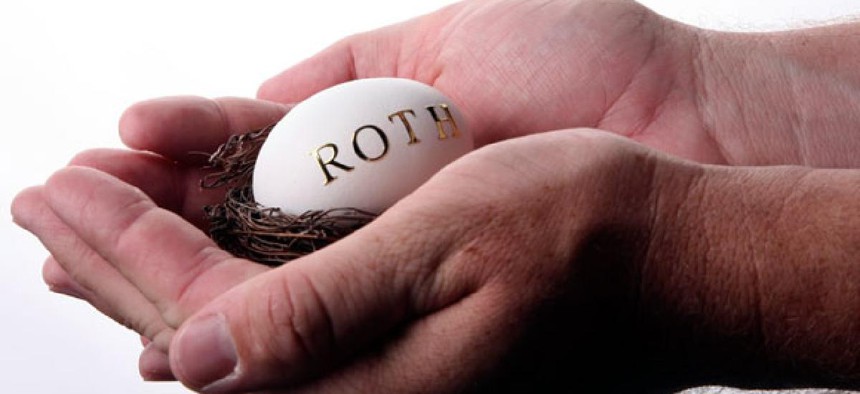
Thinkstock
Feds give TSP thumbs up
Rollout of Roth option could frustrate enrollees, board officials acknowledge.
Federal employees’ satisfaction with the Thrift Savings Plan increased in 2011, although officials anticipate the long-awaited rollout next month of the plan’s new Roth 401(k) option will ruffle some feathers.
“Even if we do it perfectly, we will leave some people confused and frustrated,” Greg Long, executive director of the Federal Retirement Thrift Investment Board, acknowledged during the group’s monthly meeting Monday in its new Capitol Hill office. “I agree that there is potential for a decrease in [user] satisfaction,” he said in response to concerns that the complicated nature of the launch could result in complaints from enrollees until the benefit is fully implemented.
The board is planning an extensive public outreach campaign to educate TSP enrollees about the benefit that will continue far beyond the official May 7 launch date. In addition, the TSP administrator plans to add online and mobile features throughout the summer that will help feds calculate their income and contribution rates. “This does not end with the implementation of Roth on May 7,” said Sophie Dmuchowski, the board’s deputy director of communications.
The Roth offering, which the board has been working on for the past two and a half years, is similar to the one available to private sector employees. It will allow federal employees to invest money that’s already been taxed so it cannot be taxed again upon withdrawal, unlike a traditional TSP investment. Feds can contribute up to $17,000 to the traditional TSP and the Roth option combined in 2012. The Internal Revenue Service announced last fall that the cap on individual TSP contributions in 2012 would increase $500, from $16,500 to $17,000, as a result of the change in the cost-of-living index. Employees 50 and older can contribute an additional $5,500.
Many federal employees interested in taking advantage of the Roth option will have to wait until later this year to do so. Officials have cited complicated and differing pay systems as reasons for the delay. Long said the board couldn’t wait for every agency to be ready to roll out the new benefit at the same time; otherwise the initiative might never have gotten off the ground, he said.
The board on Monday also released the results of its 2011 TSP satisfaction survey, which included more than 8,000 respondents. Eighty-six percent of those surveyed said they were satisfied with the TSP’s competitiveness with other private sector plans, its accessibility, safety and security -- a 5 percent increase from the previous survey in 2008. In addition, 54 percent of civilians currently are contributing to their TSP accounts, and Long said it was important to stay focused on engaging the 46 percent who are not squirreling away funds. Seventy-four percent of survey participants who identified themselves as militaryservice members said they currently contribute to TSP accounts. TSP satisfaction on average was higher among older and better paid employees, according to the data. In addition, TSP participation rose slightly among civilian federal employees and service members from February to March, the board reported.
Union officials have argued that recent legislative efforts to increase the amount current federal employees contribute to their defined retirement benefit, or pension, could reduce individual contributions to the TSP. Kim Weaver, director of external affairs, said she has not heard any concerns about that from congressional staff or lawmakers, and the TSP’s current data does not reflect such a trend. It’s on the board’s radar screen, however, she added.
NEXT STORY: Five Retirement Tips







